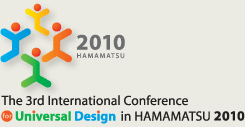Inclusive Design Viewed from the Perspective of the Majority World

Emeritus Professor in Inclusion Research, University of Northumbria/Consultant, European Commission: UK
Based on his experience Jim S Sandhu will briefly cover the historical and conceptual emergence and convergence of inclusive design. He will analyse the varying US and European approaches to inclusive design and compare their tangible impact on developing countries. His main thesis is that universal design has made very little impact on poor countries because it's prime focus is on design problems of the developed world requiring a high level of literacy and some understanding of technology, which most potential users in these countries lack. This is a serious limitation of 'universal design' claims which is meant to encapsulate the world and beyond.
Sandhu maintains that the public relations drive which is a dominant force in the States is behind many of the claims for universal design achievements. In reality it covers a very narrow spectrum as most proponents have very little understanding or experience of the majority world.
He narrows down his prime exemplar to India which is a paradox of development as well as a serious case of poverty and illiteracy. These attributes are typical of the majority world. The contrasts and contradictions highlighted signify major hurdles for the utilisation of inclusive design to alleviate illiteracy, poverty, hunger, unemployment, shelter, etc


